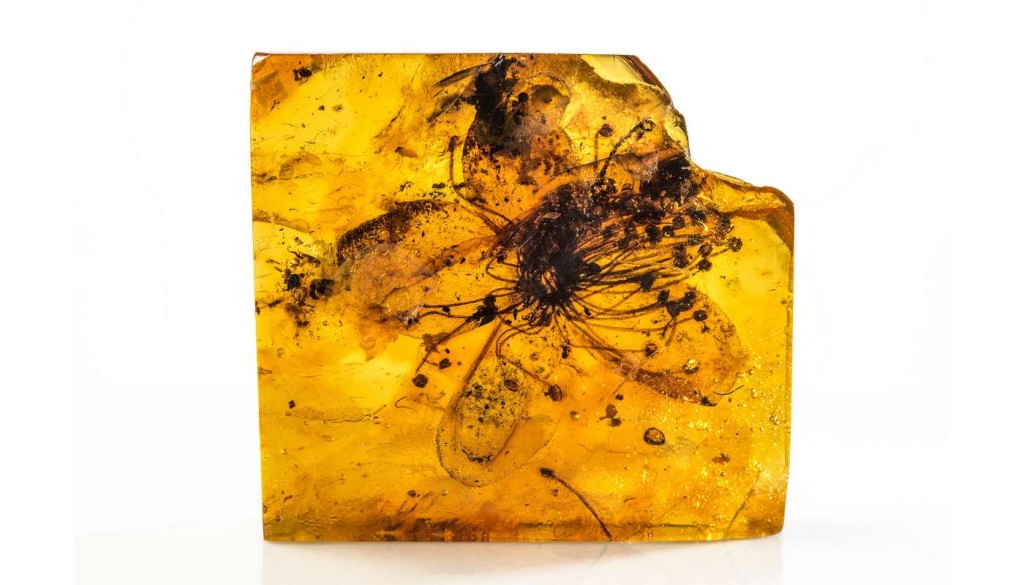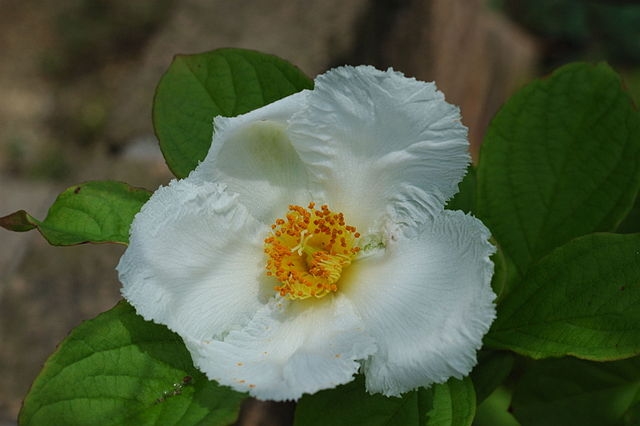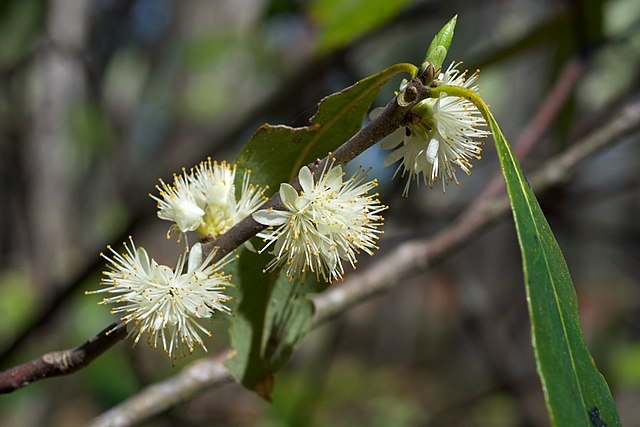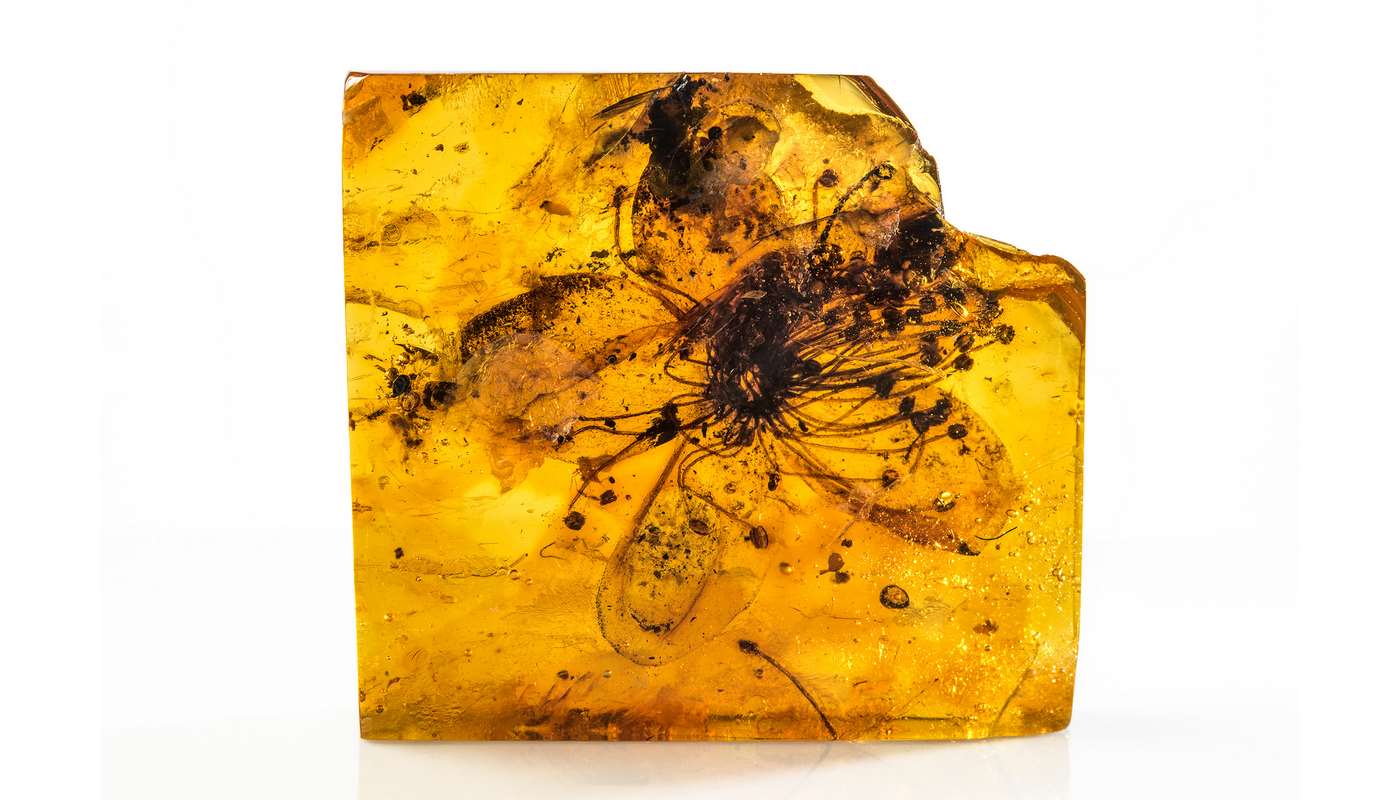
The world’s largest flower encased in amber has recently been re-examined by scientists who discovered it was producing pollen at the exact same time it was covered in the tree resin which forms amber.
This remarkably lucky discovery allowed the scientists to study the pollen grains and assign the ancient flower to its still-living cousins.
Amber is like a time capsule. It famously preserves plants and insects visible over millions of years in incredible detail. Plant inclusions in amber are rare but very valuable for research. They make it possible to reconstruct the vegetation in different phases of the Earth’s history and to draw conclusions about the flora of the amber-producing forests.
One of the largest deposits in the world is in Kaliningrad on the Baltic Sea, where Baltic amber for jewelry is mined, 90% of the world’s total supply. Hundreds of metric tonnes are mined there every year, and the forests may have created 100,000 tonnes of this miraculous resin.
Discovered almost 150 years ago, a 1.1 inch-long flower encased in amber was assigned as the Stewartia genus, known colloquially as camellia flowers, and then sheleved.
.
Now, Eva-Maria Sadowski from the Museum of Natural History Berlin and Dr. Christa-Charlotte Hofmann from the University of Vienna, examined this fossil from the collection of the Federal Institute for Geosciences and Natural Resources for the first time since its discovery.
They found that numerous pollen grains that had escaped from the stamens of the enclosed flower.

“It is very unusual to find such a large blossom in amber, which, moreover, releases its pollen exactly at the time of embedding in the resin,” Dr. Sadowski said in a translated press release. The pollen was scraped out with a scalpel for examination under the scanning electron microscope.
“Only under extremely high magnification can morphological details be recognized on the pollen grains, which are only a few micrometers in size,” adds Dr. Hofmann.
MORE PREHISTORIC NEWS: Spectacular Fossils Discovered from Prehistoric Rainforest Reveal Intimate Details From 11 Million Years Ago
Based on the pollen and some flower characteristics, the researchers were able to assign the fossil to the Asian representative of the genus Symplocos from the Symplocaceae family. Also known as “sweetleaf” in English-speaking countries, this family includes shrubs and small trees.
It is the first find of this plant genus from Baltic amber, but Symplocos was not alone in the Baltic amber forest at the time. Around 34 to 38 million years ago, it housed numerous other plants whose descendants are now only found thousands of miles away in East and Southeast Asia.

At that time it was even warmer and rainier in Europe than today, so that many representatives of the beech family, like false chestnuts, (Castanopsis) and conifers like the cedar Cryptomeria which today is endemic only in Japan and China, could feel at home.
Together they formed a diverse ecosystem consisting of coastal swamps, bogs, and mixed forests.
“Our new findings about this uniquely beautiful flower inclusion are an additional piece of the puzzle that will help us to further decode the flora of the Baltic Amber Forest and thus to draw conclusions about the climate of past times,” said Dr. Sadowski. “Only with such insights can we gain deeper insights into the forests of the earth’s history and understand their change over time.”
SHARE This Beautiful Flower Preserved In Time With Your Friends…




















